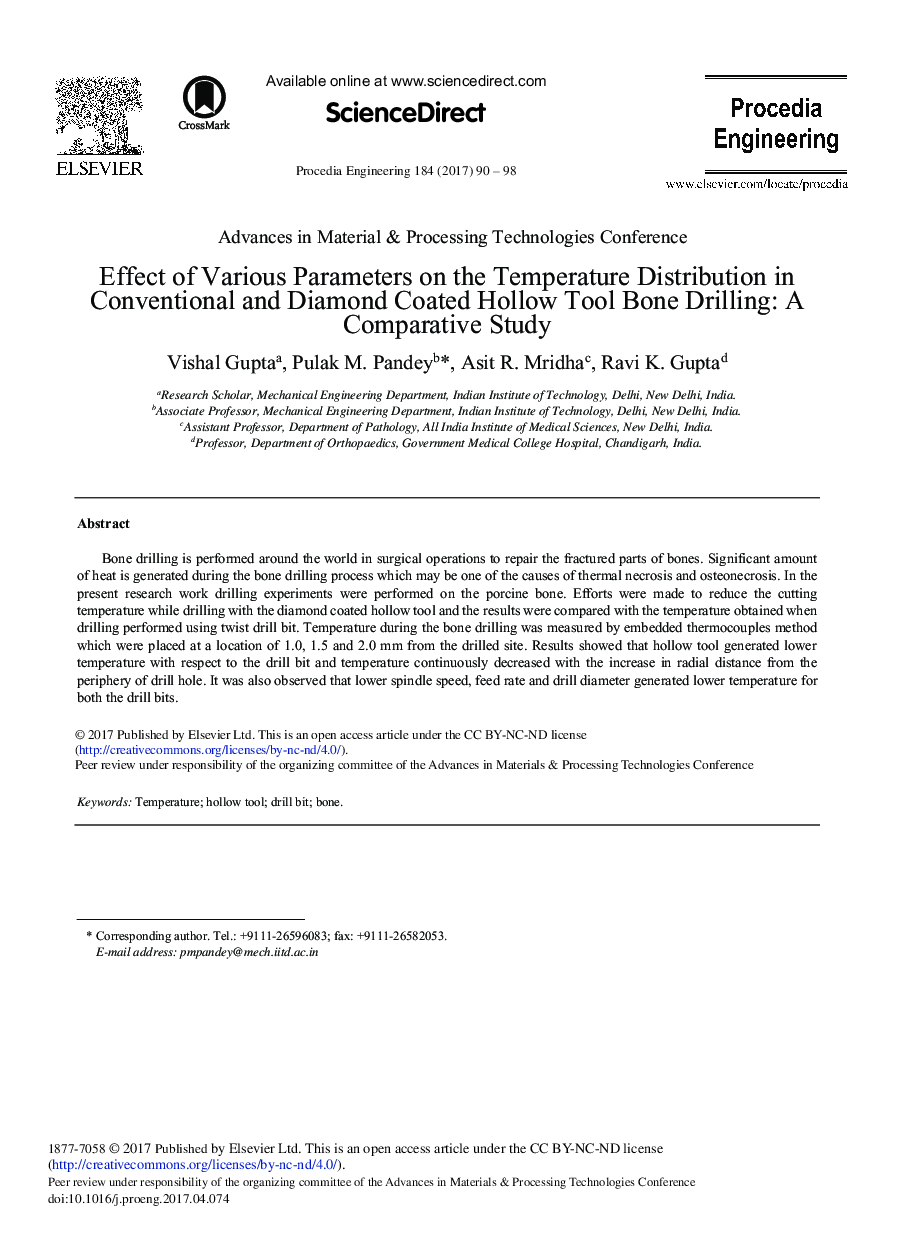| Article ID | Journal | Published Year | Pages | File Type |
|---|---|---|---|---|
| 5029110 | Procedia Engineering | 2017 | 9 Pages |
Bone drilling is performed around the world in surgical operations to repair the fractured parts of bones. Significant amount of heat is generated during the bone drilling process which may be one of the causes of thermal necrosis and osteonecrosis. In the present research work drilling experiments were performed on the porcine bone. Efforts were made to reduce the cutting temperature while drilling with the diamond coated hollow tool and the results were compared with the temperature obtained when drilling performed using twist drill bit. Temperature during the bone drilling was measured by embedded thermocouples method which were placed at a location of 1.0, 1.5 and 2.0 mm from the drilled site. Results showed that hollow tool generated lower temperature with respect to the drill bit and temperature continuously decreased with the increase in radial distance from the periphery of drill hole. It was also observed that lower spindle speed, feed rate and drill diameter generated lower temperature for both the drill bits.
